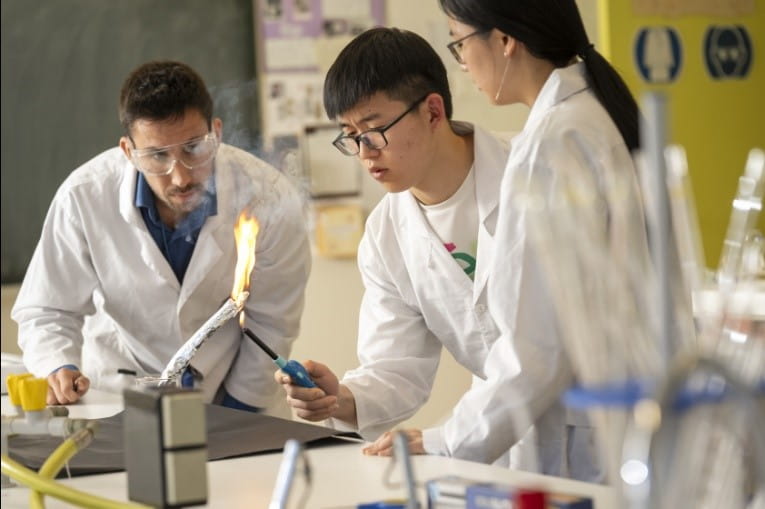We use cookies to improve your online experiences. To learn more and choose your cookies options, please refer to our cookie policy.

Physics may seem like it’s only science and formulas, but with the right perspective we hope your child can come to see it as their ticket to understanding how the world rocks and rolls on a fundamental level.
We spoke to physics teachers from across Nord Anglia and asked them to give us their best advice to demystify physics for parents looking for ways to support their children.
The world can’t seem to agree on miles vs. kilometres, but the world of physics tends to stick to the metric system, where the units of measurement are metres (not feet), kilograms (not pounds), Celsius (not Fahrenheit) and so on.
“Regardless of where you live around the world, it's so important that your child knows the metric system like the back of their hand, and even how to convert units into this system. Physics teachers like me will thank you!” says IB teacher Emilio Garcia from NAIS Dublin.
Make it stick at home with some fun activities like measuring dinner ingredients in grams or figuring out a garden layout in metres. You can even grab a GPS and go on a walk together to measure your distance in kilometres; it's a great way to get an accurate sense of how far a kilometre actually is. The good news is it’s less than a full mile!
The internet is a teeming jungle of information—and misinformation. Sometimes it’s easy to tell what’s correct, but other times the validity of a source can be hard to know at first blush.
Pro tip? Steer your kids towards sites and sources that scientists give a thumbs-up to. “These will be sites that cite their sources, fact check their claims, have reputable authorities weighing in, and which understand their own biases,” says Emilio.
Teaching your kids to back up any claims with a legitimate source is a great way to encourage their critical thinking and to ensure their own pool of knowledge is backed up by solid facts, not just loud opinions.
Keep things fresh by shaking up how you explore physics. Our teachers suggest blending different tools—think simulations, quick educational videos, or even snippets from YouTube. Emilio suggests checking out "This Weird Shape Rolls Uphill Instead of Down" on YouTube, an impressive series that can help kids with physics.
He also recommends PhET, a site for simulations where students can dive into activities like constructing a nucleus or exploring the impact of sound waves.
Khan Academy and the Brilliant app are also top-notch for learning at your own pace with high-quality content, he says.
Alexander Martinez Concepcion, a teacher from Hamelin-Laie International School, points to GradePod as a great resource for at-home physics projects. These projects—like testing how water temperature affects a wine glass’s resonant frequency or making a paper helicopter—blend challenge and fun perfectly.
Alexander also says Grade Gorilla is an excellent resource for science revision. It’s a site where students can review concepts and tackle exam questions in a fun way, competing with other students.

Physics is the study of the physical world, and by its definition is all around us. There’s no aspect of the visible world that isn’t in some way explained by physics: from fundamental things like magnets and gravity all the way to mind-bending concepts like subatomic particles.
You can help turn everyday moments with your child into a physics tie-in:
“These real-world, impromptu tie-ins can make abstract concepts snap into focus and show kids the awesome side of science.” said Cristina Brazzelli, physics teacher and STEAM Coordinator at College du Leman.
Lastly, no one becomes a physics whiz overnight and it’s important to remember that patience comes before perfection.
You can best support your kids by exploring physics together from a young age, rather than spoon-feeding them answers when they’re in higher-level courses in secondary school. It’s about the journey, not just the destination.
“Our curriculum places a large focus on advanced physics in upper secondary, but it’s really in the middle years that students should be honing their skills in the sciences like physics,” Emilo adds. “Our best-performing students are those that are encouraged to pursue the sciences from a young age, not just in secondary”.
Physics doesn’t have to be a brain-buster. With our teachers’ insider tips and Nord Anglia Education’s support, you can turn physics classes into a playground of discovery. Who knows? Maybe a kitchen experiment today can spark a groundbreaking discovery in science tomorrow!